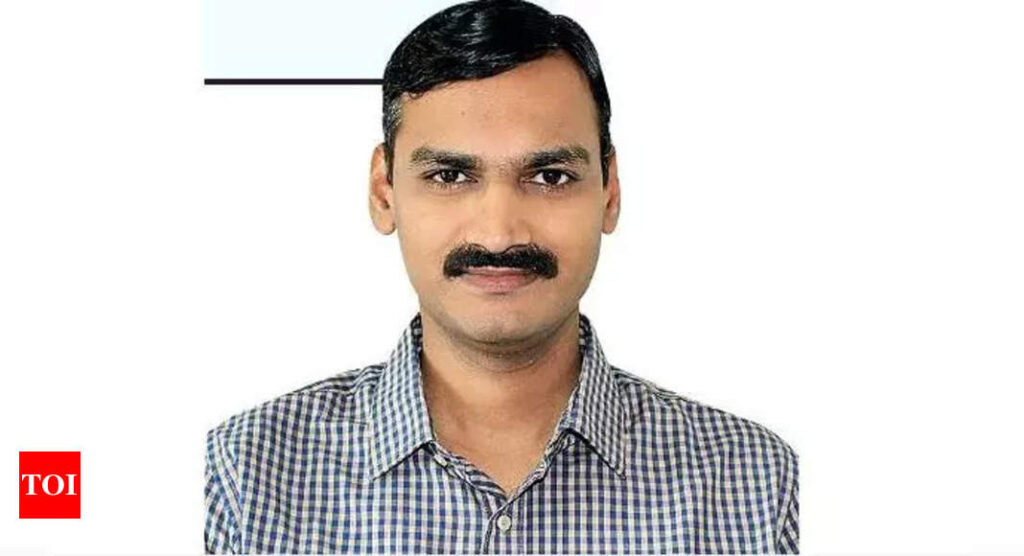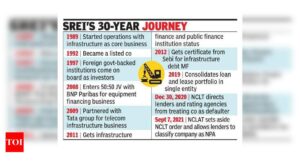Jaiganesh Balakrishna files patents every 3 months on average – Times of India

[ad_1]
Jaiganesh Balakrishnan filed his first patent when he was doing PhD in Cornell University in the late nineties. “We had come up with an efficient architecture for a pulse shaping module (a process to make the transmitted signal better suited to its purpose), and my mentor told me that the work was novel enough to file a patent. I was excited, but not convinced that it was. In hindsight, it looks obvious. And that’s how many inventors feel, that what they have done is not worth patenting,” he says.
Balakrishnan is a principal architect and fellow at Texas Instruments, a company he joined soon after completing his PhD in 2002. He today holds 75 patents. That’s an average of a patent every three months.
How does he maintain such a prolific rate? He says when he and his team work on solving a problem, they do not start the process thinking about how to file a patent. “The starting is about understanding the current state of the art in technology, what has been done before, what metrics need to be improved, and then come up with solutions that will improve upon it,” he says.
Once they solve the problem effectively, they look at the areas or processes that are patentable, and draft the patent ideas. It is always a byproduct of solutions.
Balakrishnan works in communication systems and signal processing and is closely associated with the ongoing 5G transformation. His team works on products that go into wireless base stations. The objective is to handle rapid data downloads and reduce the cost per megabyte. An integrated transceiver system-on-chip (SoC) is the building block of those stations. This uses a large number of antennas to increase data throughput. “We come up with architecture and products that increase the level of integration, and reduce the cost,” Balakrishnan says.
He credits his success with patents to the TI ecosystem. “TI has a robust system, including a patent review committee to whom the inventor can disclose his novel idea. The committee evaluates the novelty, the impact, and whether the idea is detectable (detectability is what enables a patent holder to know if someone infringes the patent),” he says. This process, he says, is effective for first time patent filers, who may not recognise the value of the invention.
Balakrishnan says one of the keys to innovation is to understand the state-of-the-art in the domain one is working on by collaborating with experts in the organisation and reading research papers.
Balakrishnan is a principal architect and fellow at Texas Instruments, a company he joined soon after completing his PhD in 2002. He today holds 75 patents. That’s an average of a patent every three months.
How does he maintain such a prolific rate? He says when he and his team work on solving a problem, they do not start the process thinking about how to file a patent. “The starting is about understanding the current state of the art in technology, what has been done before, what metrics need to be improved, and then come up with solutions that will improve upon it,” he says.
Once they solve the problem effectively, they look at the areas or processes that are patentable, and draft the patent ideas. It is always a byproduct of solutions.
Balakrishnan works in communication systems and signal processing and is closely associated with the ongoing 5G transformation. His team works on products that go into wireless base stations. The objective is to handle rapid data downloads and reduce the cost per megabyte. An integrated transceiver system-on-chip (SoC) is the building block of those stations. This uses a large number of antennas to increase data throughput. “We come up with architecture and products that increase the level of integration, and reduce the cost,” Balakrishnan says.
He credits his success with patents to the TI ecosystem. “TI has a robust system, including a patent review committee to whom the inventor can disclose his novel idea. The committee evaluates the novelty, the impact, and whether the idea is detectable (detectability is what enables a patent holder to know if someone infringes the patent),” he says. This process, he says, is effective for first time patent filers, who may not recognise the value of the invention.
Balakrishnan says one of the keys to innovation is to understand the state-of-the-art in the domain one is working on by collaborating with experts in the organisation and reading research papers.
[ad_2]
Source link







